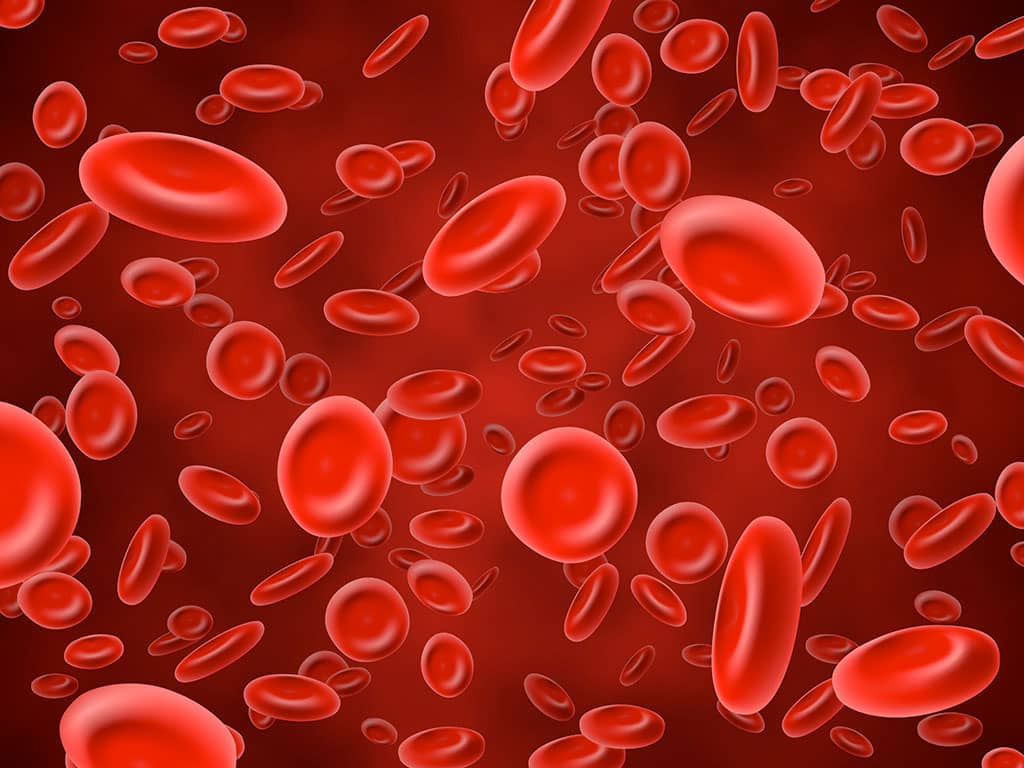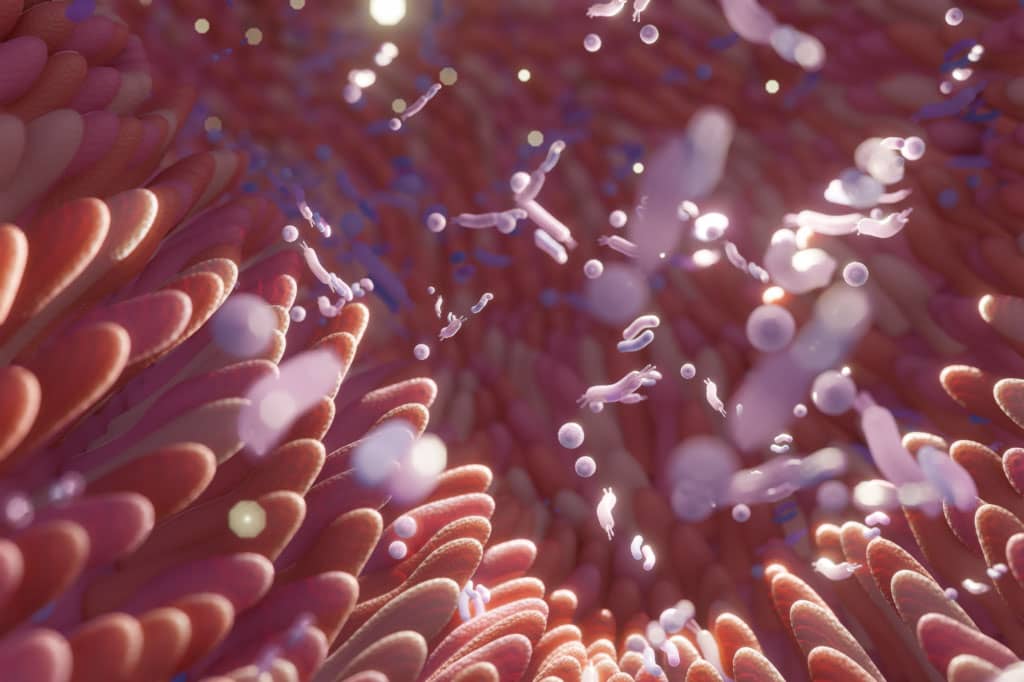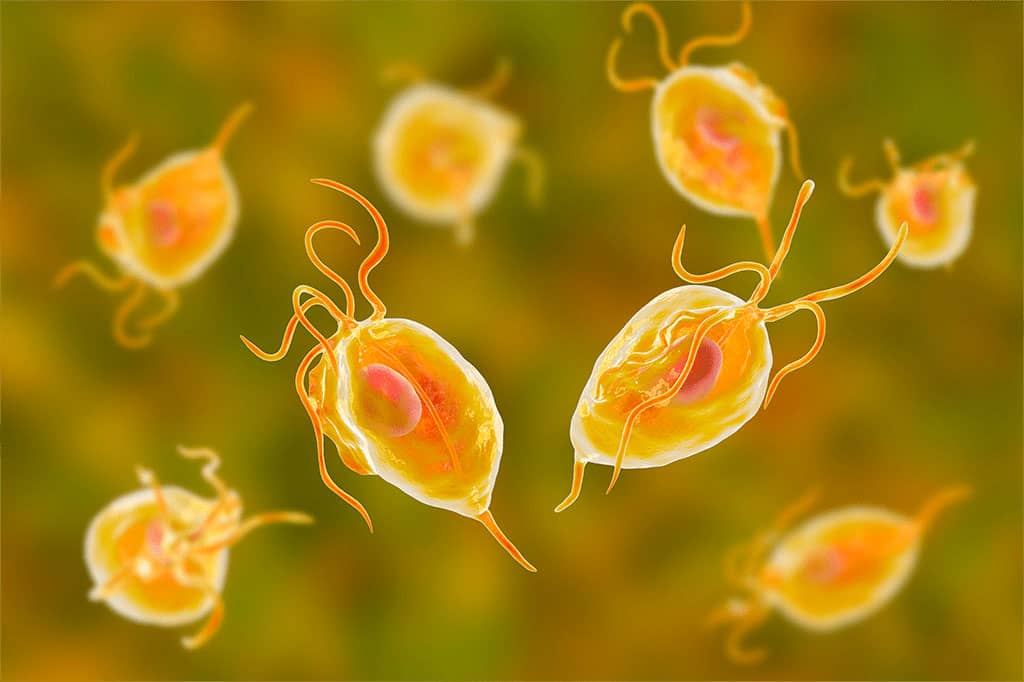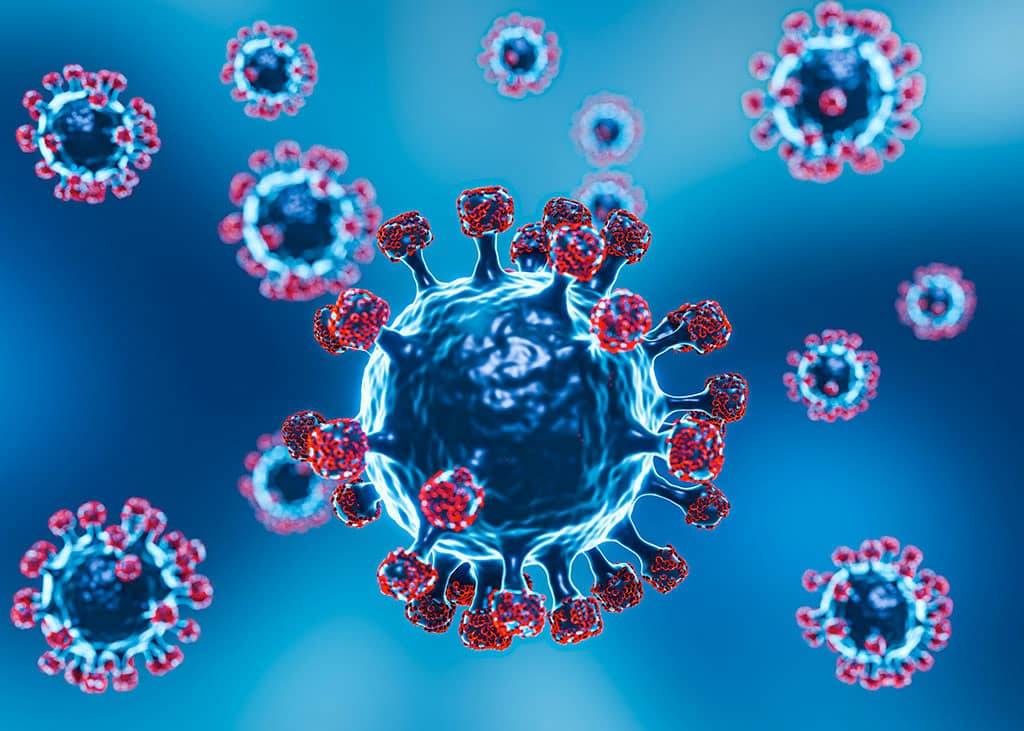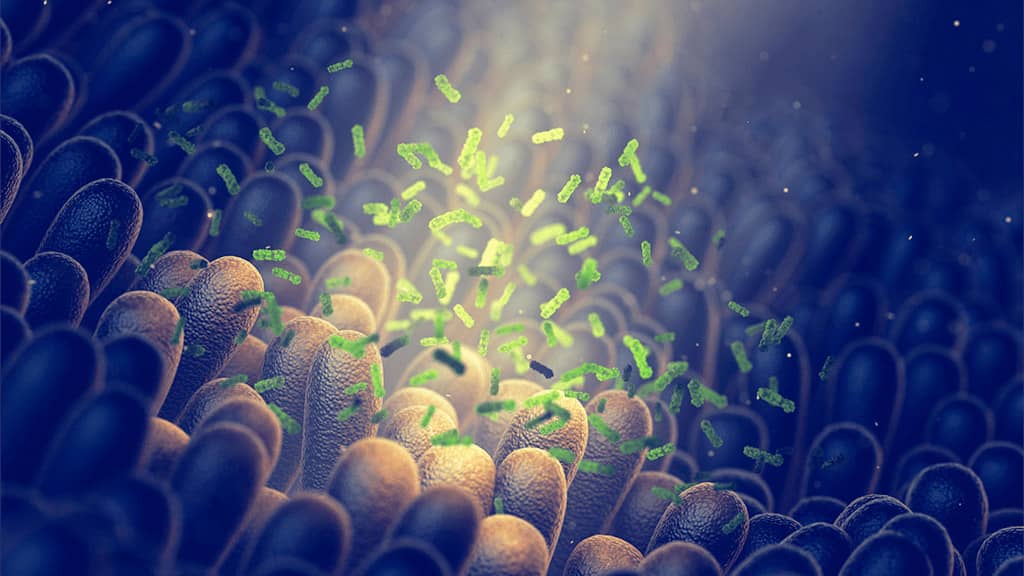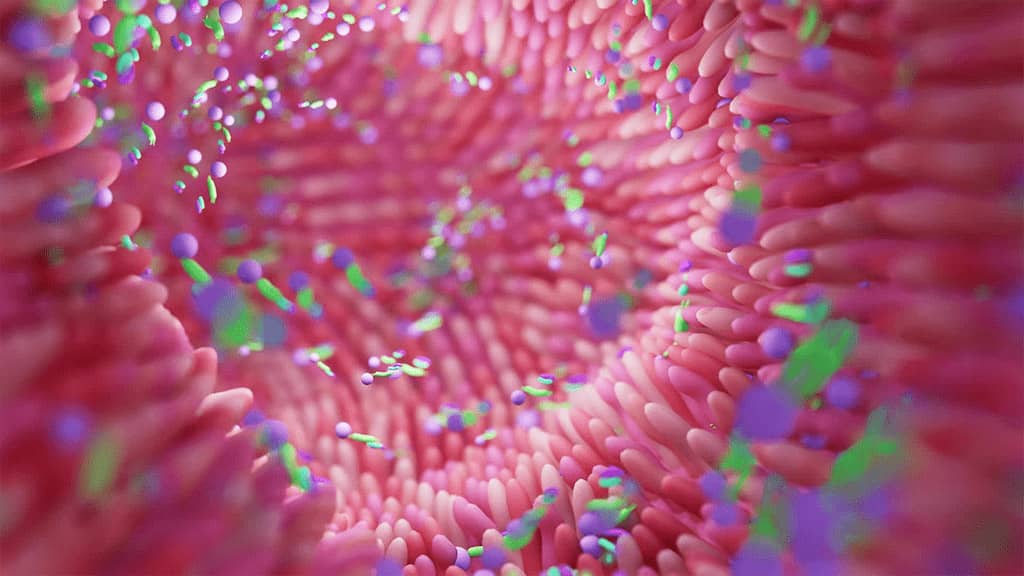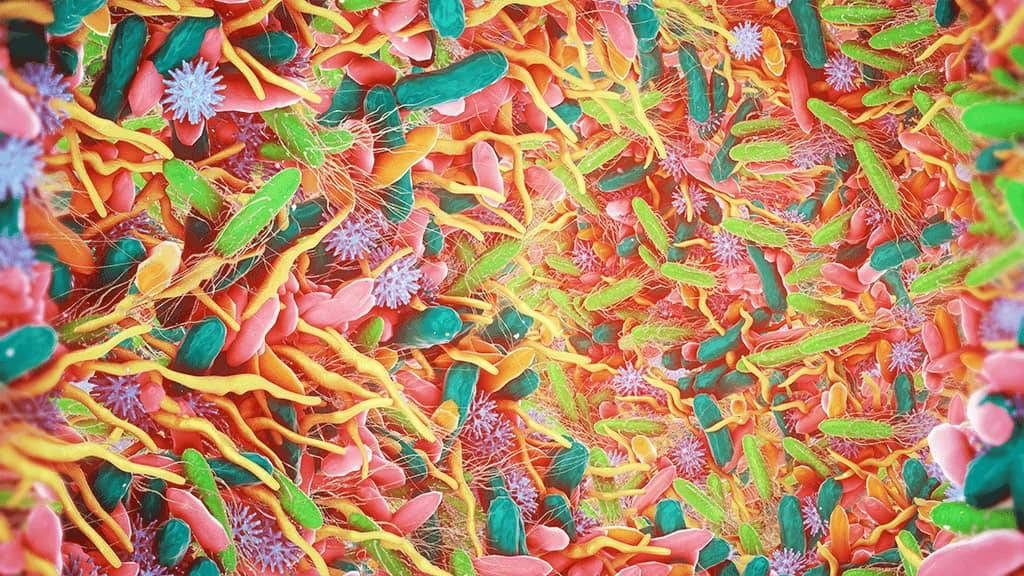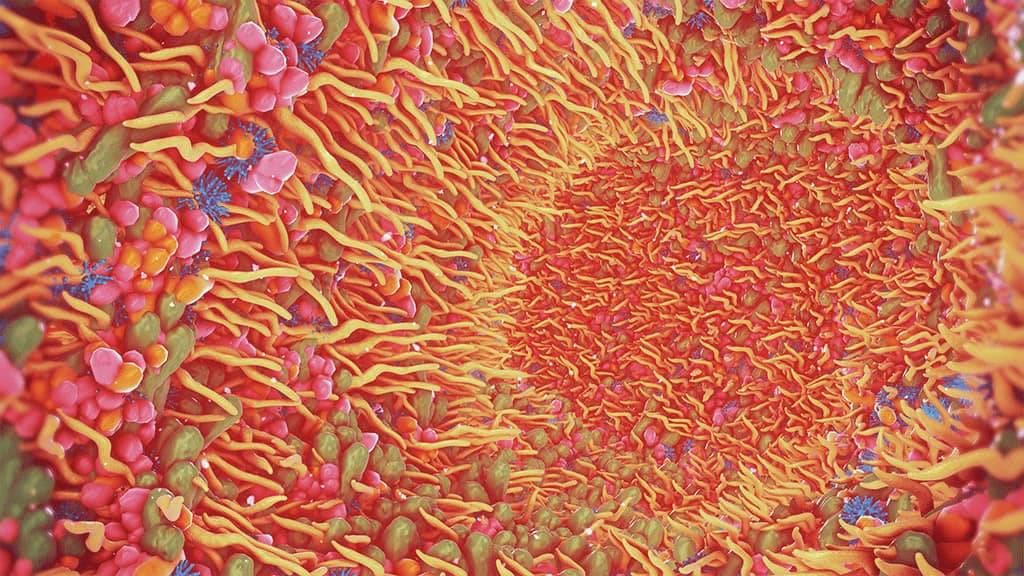Top sport and the gut microbiome
A great deal of time and energy is invested in training and preparing top athletes. Nothing is left to chance; a wide range of aspects are considered: training, coaching, guidance, physiotherapy, nutrition, and so on.
Yet one important aspect is often forgotten… the gut microbiome.
While the intestinal microbiome is largely responsible for the production of building materials that the body needs for peak performance.
How do these bacteria convert nutrients, which are often specially selected, into the substances needed for peak performance? And do they do this effectively and at the right time? How do you ensure optimal performance throughout the season?

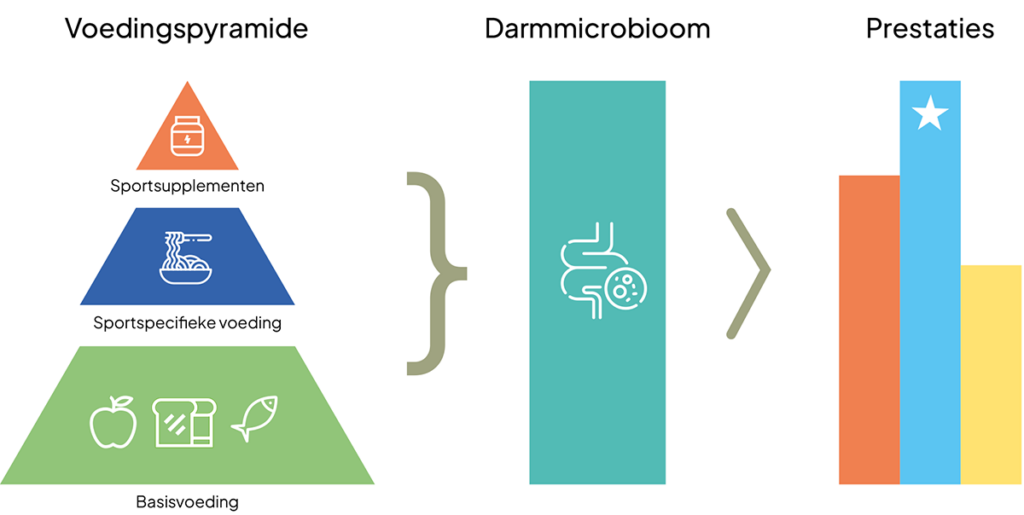

The role of the gut microbiome in health
The gut microbiome influences many things. The most obvious is, of course, the conversion of food into substances like proteins and sugars, which are then burned in the body during physical activity or used for muscle building and recovery.
But the gut microbiome also has a major influence on:
- Condition
- Endurance
- Resilient capacity
- Peak load
- Stress
- Mental burden
Measuring is knowing and knowing is controlling
Every elite athlete has a unique gut microbiome and produces its own unique combination of substances from the food it eats. It's this specific combination of substances that largely determines muscle building, recovery function(s), and mental health (including stress resistance and motivation).
By closely monitoring the structure and function of the gut microbiome, its strengths and weaknesses in relation to athletic performance can be identified. The gut microbiome can also be adjusted and maintained in optimal condition over time.
“The better the condition of the gut microbiome, the faster the top athlete can perform at the highest level again.”

Also want to perform better?
Curious about what we can do for you or your sports organization? Contact us today!
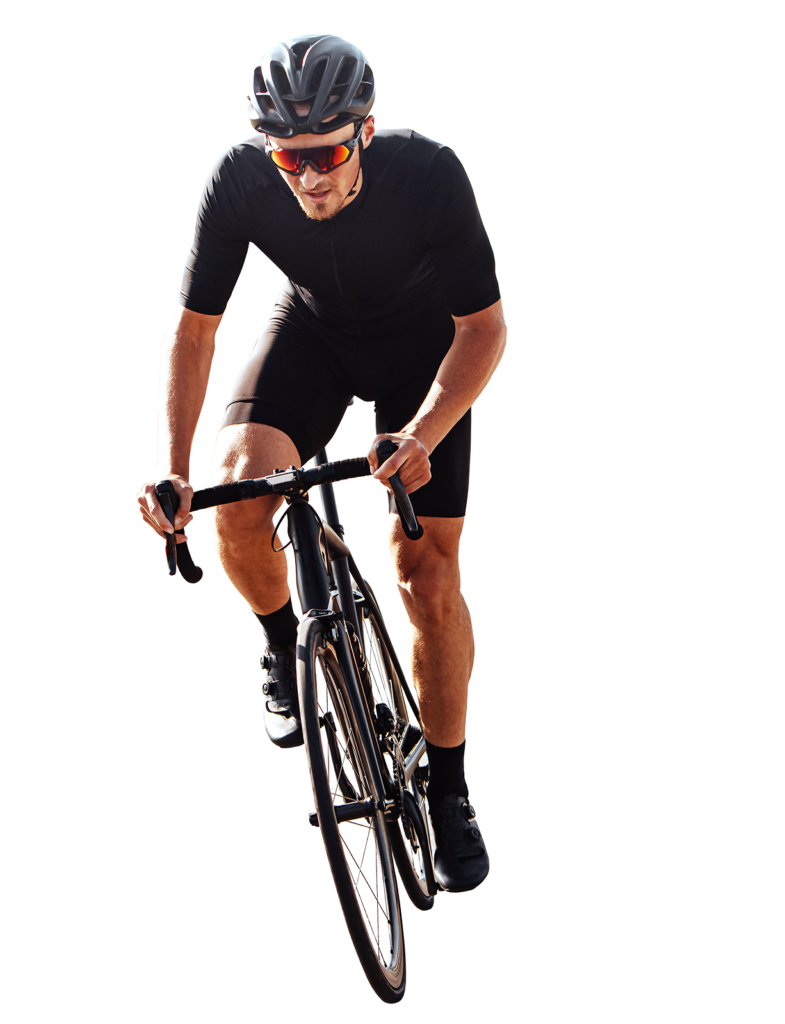
The NL-lab sports program
NL-Lab develops special programs for various sports that allow for accurate and long-term monitoring of an athlete's gut microbiome. Specifically tailored to the athlete and their gut microbiome.
We offer programs for:
- Field and indoor sports
- Power sports
- Endurance sports
These programs are based on 4 building blocks:
- Personal circumstances
- Intended performance
- The seasonal program
- Periodic monitoring
The weighting of each of these building blocks is adjusted per sport to maximize the desired effect.
Some examples
Soccer player A
A young footballer is playing for the third season at a high international level. In the previous two seasons, he experienced fatigue during the season, which was followed after a few weeks or months by intestinal complaints such as diarrhea and abdominal cramps. For the third season, the NL-Lab sports program is being used.
During the monitoring program, it quickly becomes clear that the footballer is experiencing an imbalance (dysbiosis) in his gut microbiome, with elevated levels of a specific group of bacteria. At the start of the season, this imbalance is still relatively under control, and the otherwise highly fit athlete isn't bothered by it.
As the season progresses, however, the imbalance gradually worsens because the footballer consumes too much animal protein and too little complex carbohydrates in their diet. From that protein, the bacteria (of which there are too many) produce all kinds of neuroactive biomolecules that can cause fatigue.
The long-term and worsening imbalance of the gut microbiome is the cause of the intestinal symptoms. Early intervention allows the player's diet to be adjusted early in the season so the situation doesn't escalate and the gut microbiome imbalance is reduced instead of worsened.
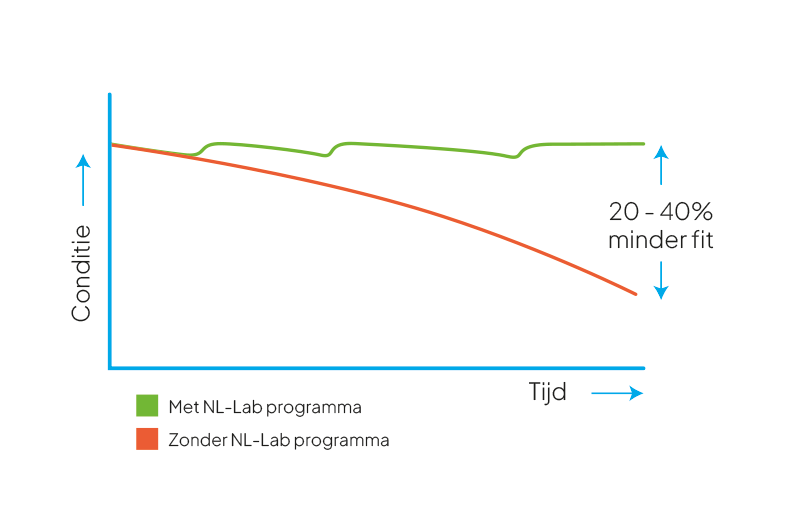
Cyclist B
A cyclist with several years of experience always experiences intestinal discomfort after a period of rest. This makes returning to normal performance take longer than desired. Adjusted training and nutrition don't deliver the desired results.
The NL-Lab sports program maps the influence of the gut microbiome on his condition. After a period of intensive exertion during the competition season, the colonization resistance (stability) of the gut microbiome decreases during a rest period. Decreased gut microbiome stability allows a yeast (Candida albicans) to colonize the intestine in larger quantities. Too much of this yeast disrupts carbohydrate digestion, slowing the rider's recovery.
Early intervention can prevent further decline in stability and allow the rider to return to their previous level more quickly.
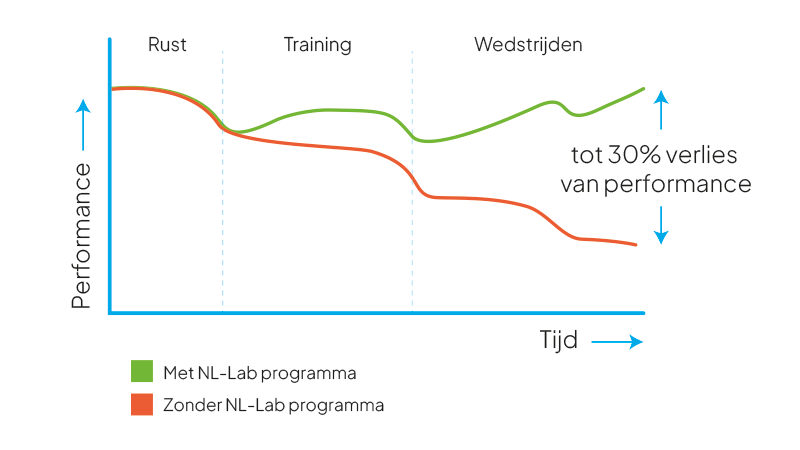
Skater C
A speed skater performs excellently at times and moderately to poorly at others. The reason for this is difficult to pinpoint, and it seems arbitrary. Until the skater encounters NL-Lab's gut microbiome monitoring program for endurance athletes.
Periodic monitoring reveals chronically reduced colonization resistance, allowing a variety of microbiological transients (some of which are potentially pathogenic) to continuously and temporarily colonize the microbiome. This results in unpredictable, but often negative, effects on various sports-related bodily functions.
By making some small adjustments in diet and nutritional supplements the problem can be made manageable and performance becomes much more stable.
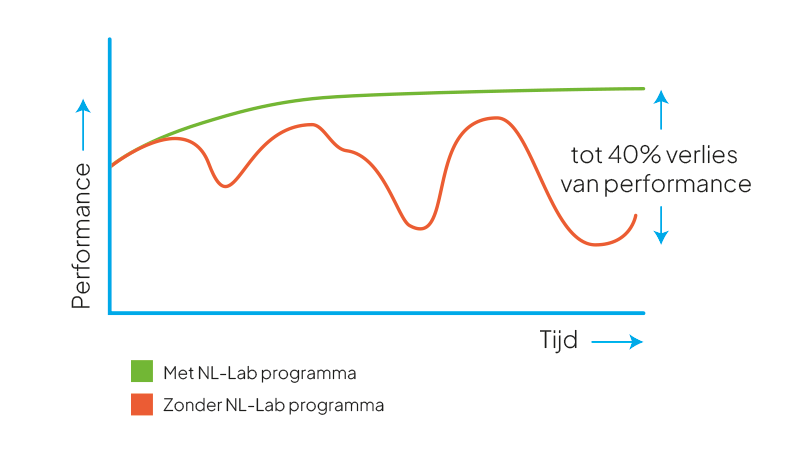
Curious about what we can do for you or your sports organization?
NL-lab is happy to visit you to explain the gut microbiome program and, in collaboration with the medical staff or athlete, develop a customized monitoring program. In consultation, the athlete(s) regularly submit a sample, which NL-Lab thoroughly analyzes. A dashboard is created for each athlete, clearly and practically communicating changes and recommendations. The results are reviewed in detail by NL-Lab experts together with the medical staff, and tailored support is provided.

